Bob Jensen's Favorite New Hampshire Luxury
Resorts
Including Some That are Gone and Some Still Open for Business
Bob Jensen at
Trinity University
The cruse ship
disasters of 2012 might inspire some tourists to consider vacationing on dry
land.
Therefore I will focus on some of the large and historic resorts in or near our
White Mountains of New Hampshire
http://en.wikipedia.org/wiki/White_Mountains_%28New_Hampshire%29
Probably the
most famous hotel-resort open year-around for business in the White Mountains is
the
Mt. Washington Hotel in Bretton Woods, New Hampshire ---
http://brettonwoods.com/
The hotel is best known in history as the site where the famous Bretton Woods
Agreement was negotiated
President Roosevelt insisted that the Big Four (United States, United Kingdom,
the Soviet Union, and China)
participate in the Bretton Woods conference in 1944
http://en.wikipedia.org/wiki/Bretton_Woods_system
Mt. Washington is 28 miles from our
cottage and is visible from my desk
It's known as the windiest mountain (daily) in the world that has a manned
weather station on top
It also has the earth's highest officially recorded mountain wind speed of 234
mph
Mt.
Washington Winds ---
http://www.trinity.edu/rjensen/tidbits/2007/tidbits071218.htm
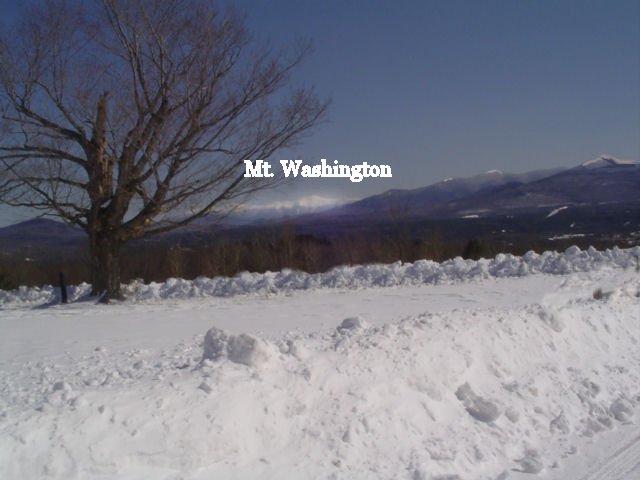
Even with my camera zoomed I cannot
see the Mt. Washington Hotel or its skiers
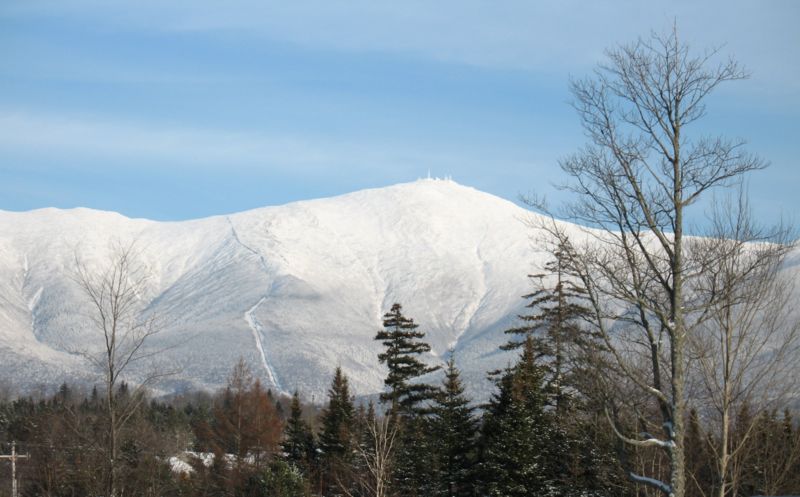
My friend Wes Lavin took this picture of the main hotel last autumn (2011)
The hotel and surrounding resort facilities are open year around
On occasion when Erika and I have house guests we take them for a night at this
hotel
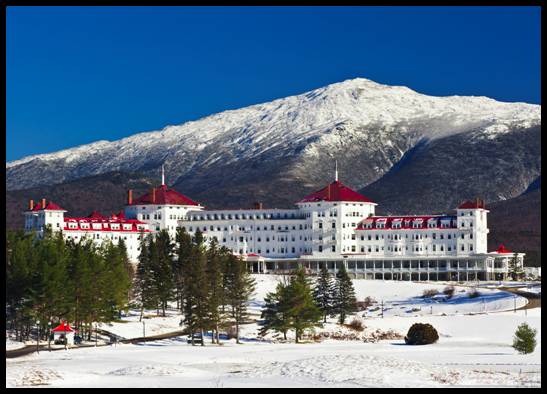
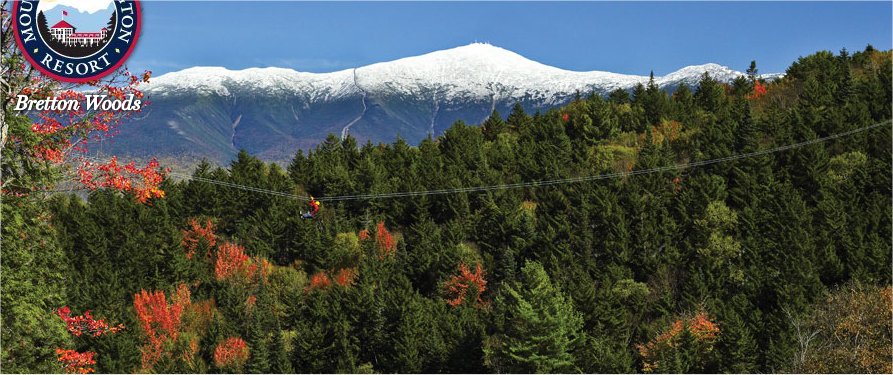
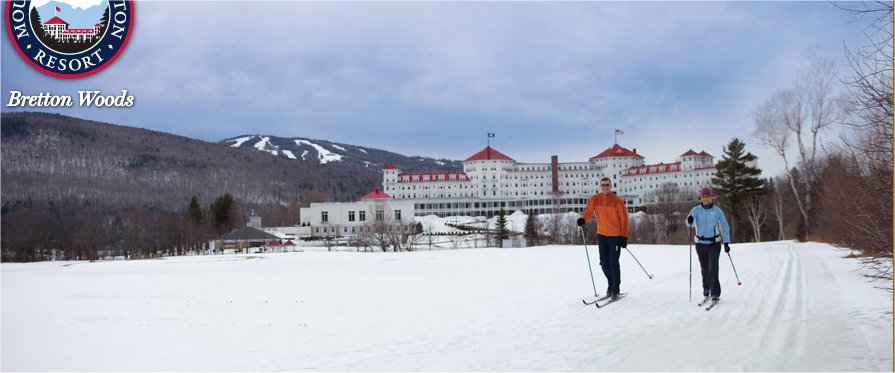
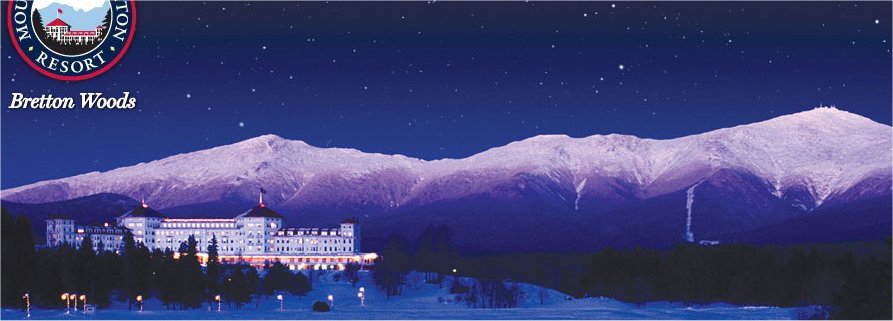
Tourists in good health (no weak
spines allowed) can get from the resort to the
top of the mountain on a herky jerky cog railroad
http://en.wikipedia.org/wiki/Mount_Washington_Cog_Railway
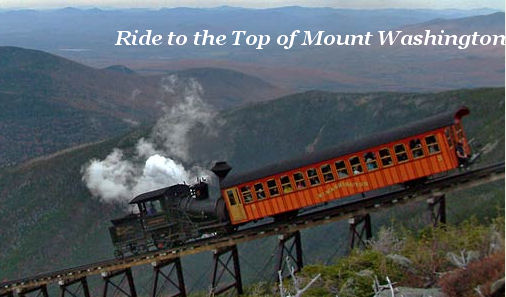
More Cog Railroad Photographs ---
http://thecog.com/photos.php
Also see
http://hikethewhites.com/cog_rr.html
The Mountain View Grand Hotel just
north of Whitefield also has a "grand" view of Mt. Washington
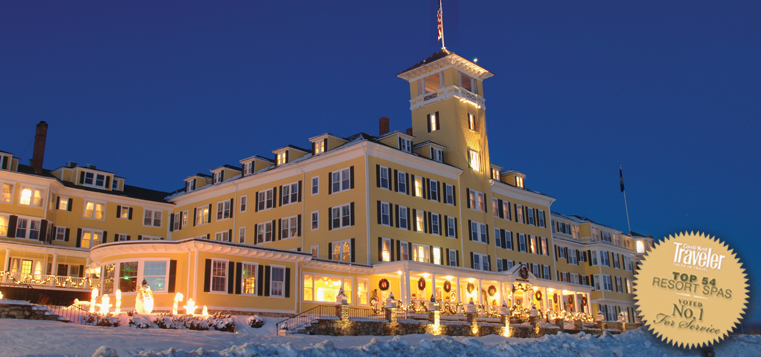
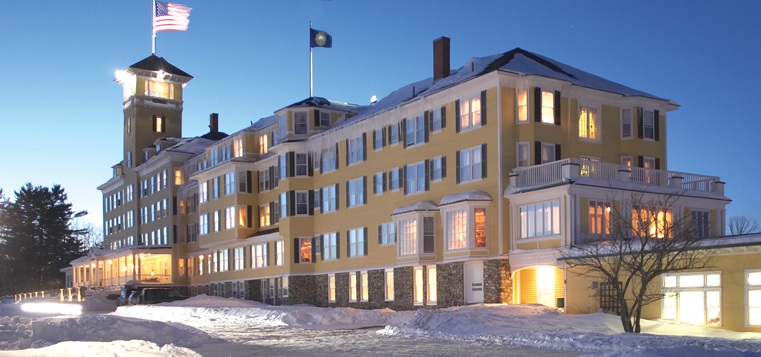
On July 4 two years ago Erika and I
spent a night with friends at the Mountain View Grand
It was a cold and rainy week end, but I managed to get some photographs of this
resort
The shot below was taken from the deck of our room on the top floor
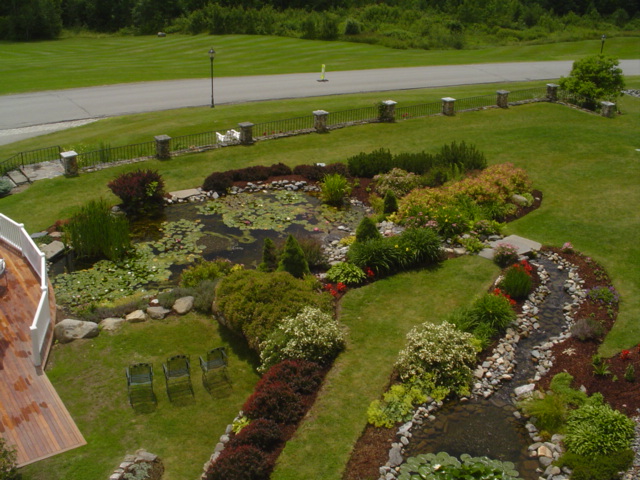
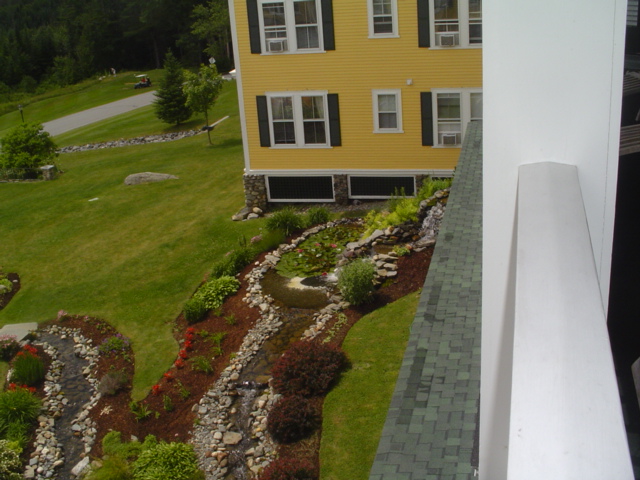
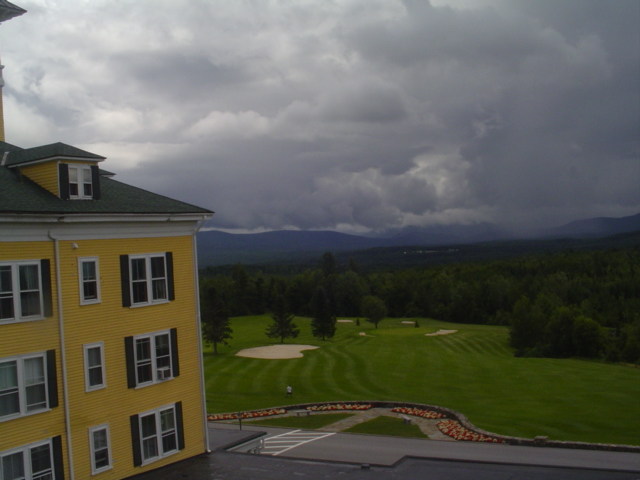
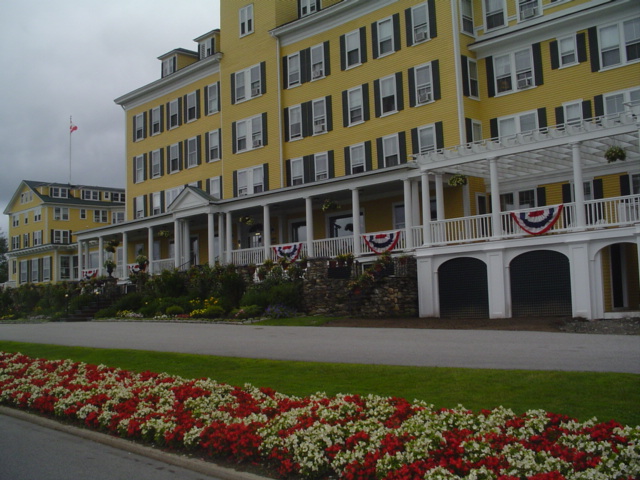
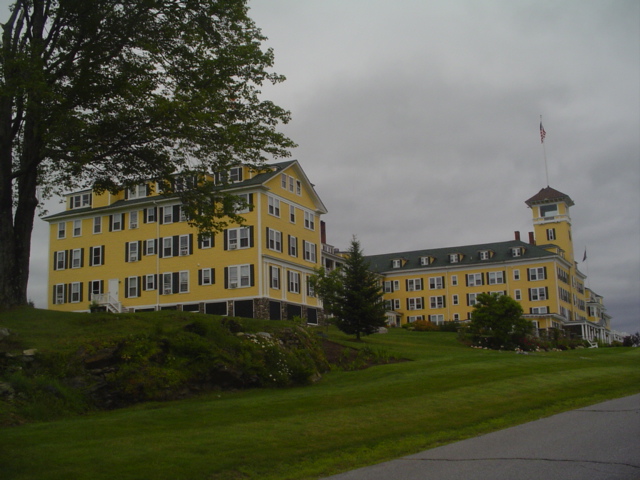

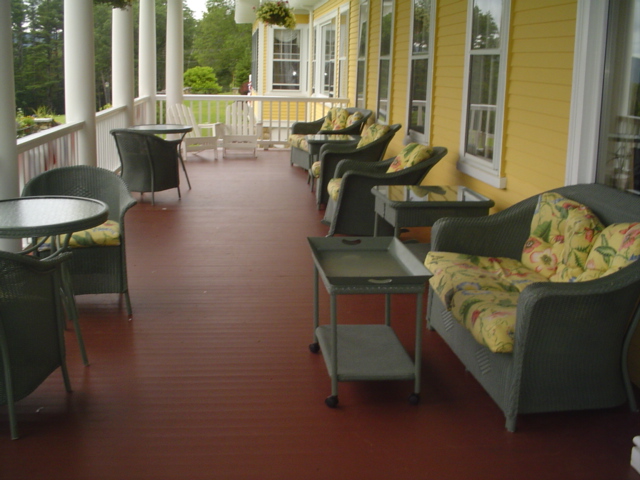
The Balsams Resort is further north
(on 15,000 acres not far from the Quebec border).
Under new ownership this resort will be closed for a year or so for extensive
renovations
http://www.thebalsams.com/
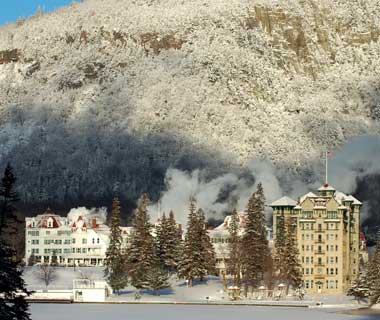
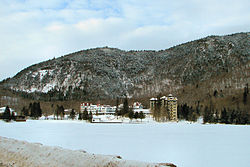
More photographs of The Balsams ---
Click Here
http://www.tripadvisor.com/Hotel_Review-g1588158-d92150-Reviews-The_Balsams_Grand_Resort-Dixville_New_Hampshire.html
Wentworth by the Sea (Atlantic
Ocean) in Newcastle near Portsmouth, New Hampshire
http://www.wentworth.com/
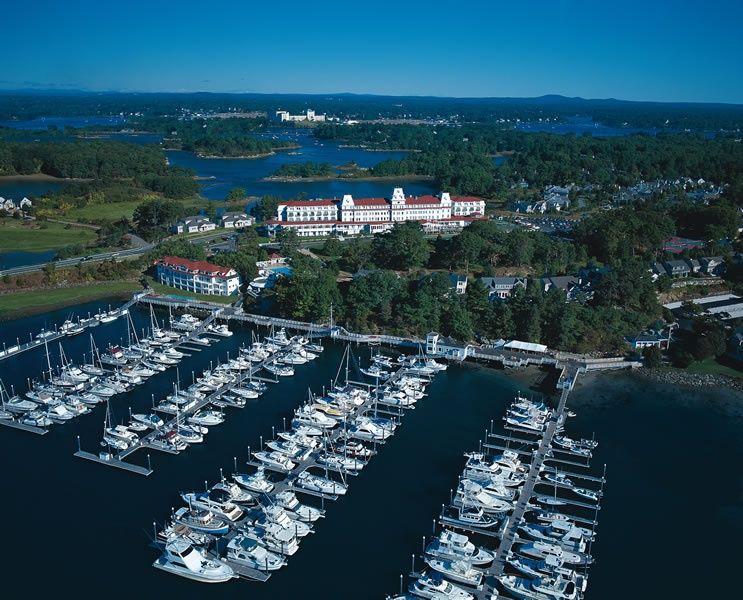
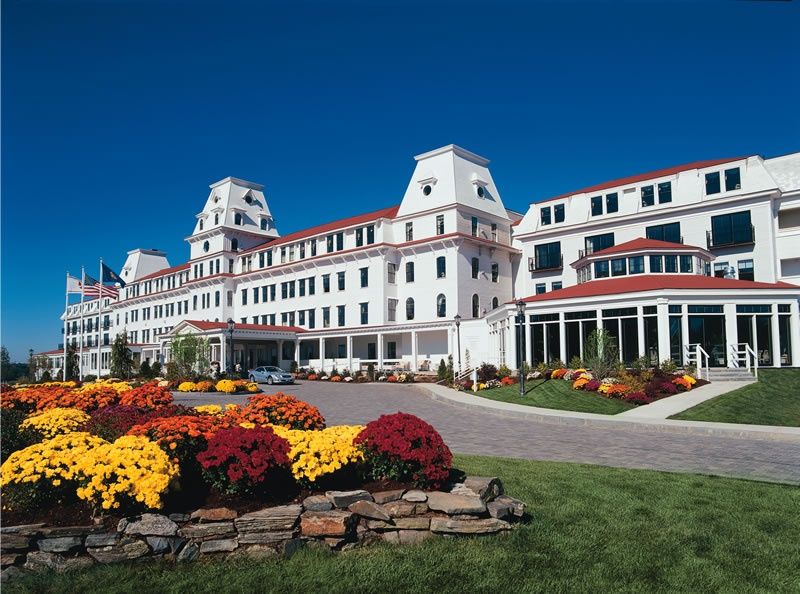
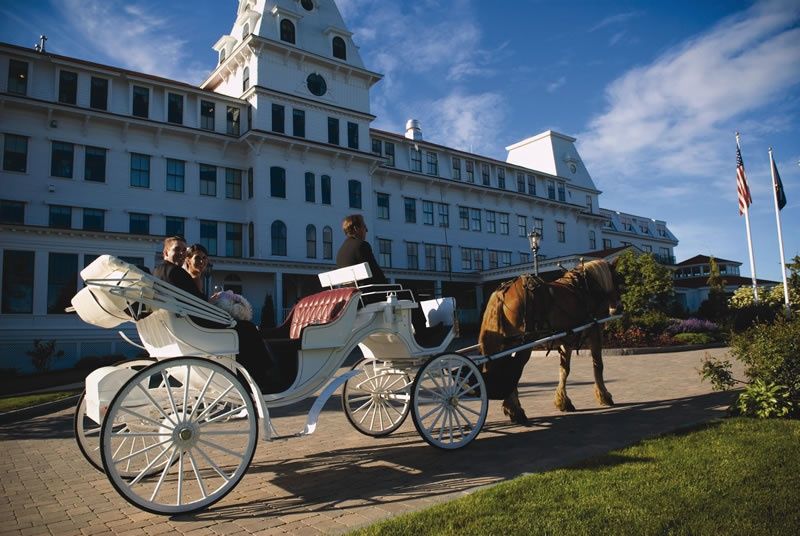
1908 Postcard
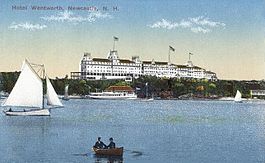
Of course there are many other
thriving (more or less) smaller scenic hotels and resorts in New Hampshire
Just down the road from us is the current Sunset Hill Hotel and Golf Course ---
http://www.sunsethillhouse.com/
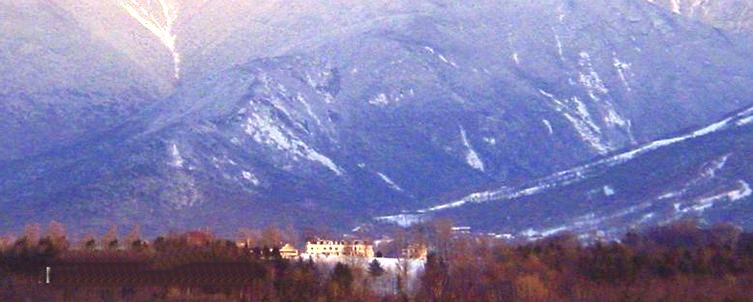
All these historic old resorts in
New Hampshire are old and inefficient to heat and cool
Some efforts have been made to economize
Some like the Sunset Hill House Hotel have solar heating supplements
The Mountain View Grand has its own windmill supplemental power source
But buildings that are well over 100 years old a very costly to maintain in
cleanliness and luxury desired by their customers
I applaud their success and survival since before 1900
Down the road in the other direction
(south) from our cottage is the historic Homestead Inn
This very old inn is still in operation but needs renovations
This site marks the beginning of our Sunset Hill Road passing to the left as
shown below
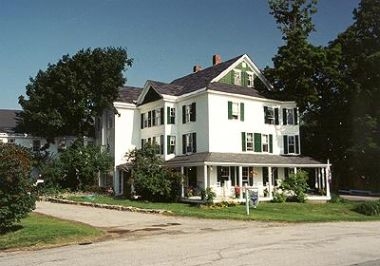
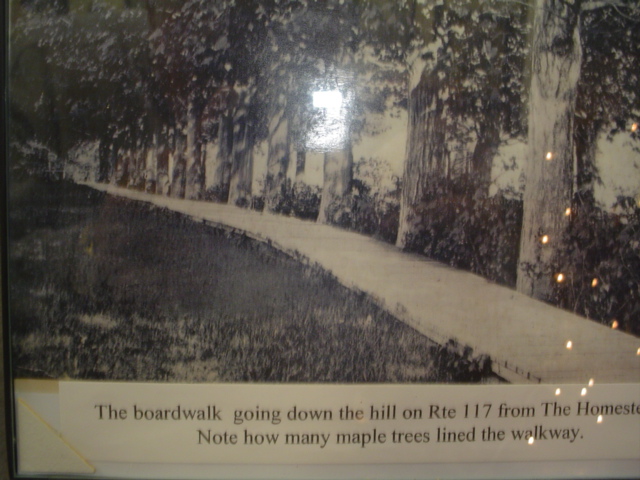
On the grounds of The Homestead is
the wonderful Sugar Hill Sampler that's currently a popular gift shop and museum
http://www.sugarhillsampler.com/
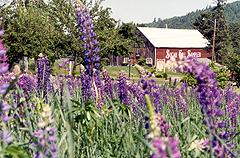
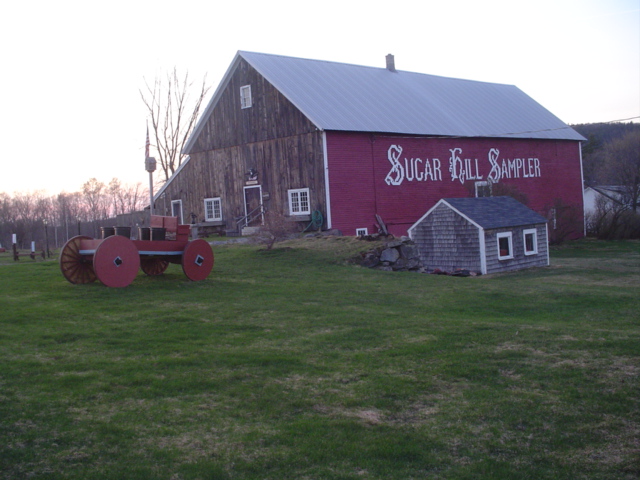
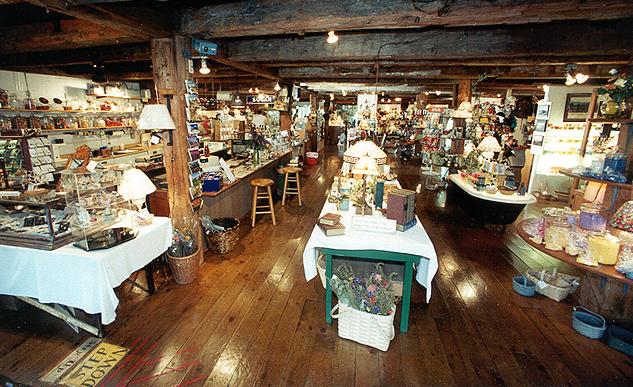
About four miles west of our
cottage, in Lyman, is the Ammonoosuc Hotel and Resort
We like its restaurant and the views of its golf course
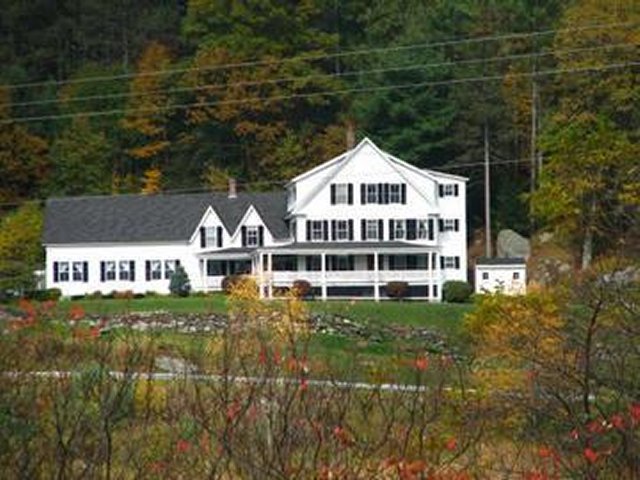
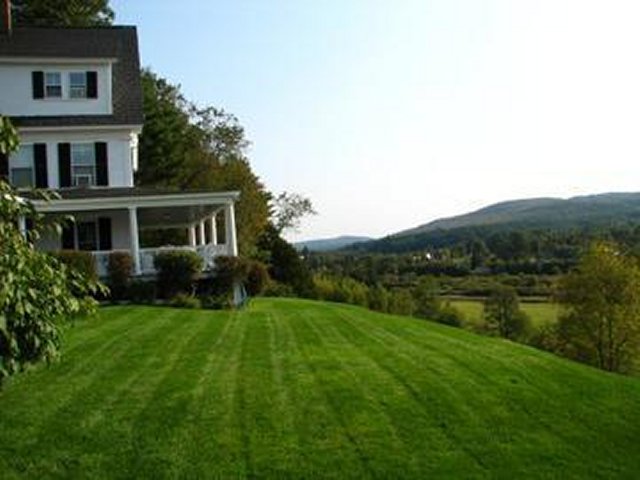
About five miles east of our cottage
off of Exit 40 on I-93 is the historic Adair Country Inn
We sometimes go there for dinner
http://www.adairinn.com/
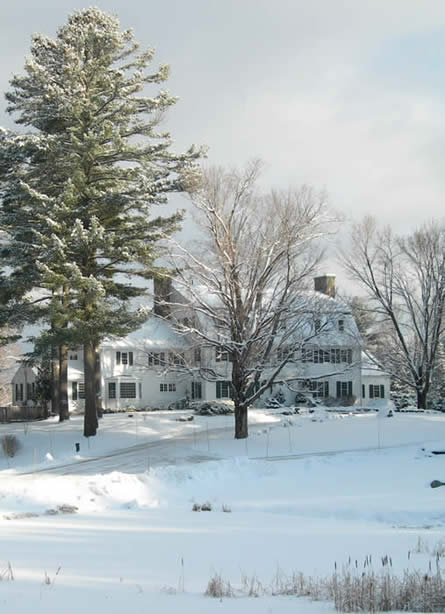
Alpine Inn in Muttersill at the base
of Cannon Mountain Ski Resort
This hotel is only a few hundred feet from a chair lift to the top of the
mountain
http://www.trinity.edu/~rjensen/tidbits/2007/tidbits070515.htm

Most of the large historic resorts
of New England no longer exist.
For example, the present-day Sunset Hill
House Hotel
is a restoration of a former resort's old Annex ---
http://www.trinity.edu/rjensen/tidbits/CottageHistory/Hotel/Brochure/Brochure1900.htm
In our tiny village of Sugar Hill
three large and luxurious resorts built before 1900 no longer exist.
Our cottage is one of the few
standing remnants of the historic Sunset Hill House Resort
In 1973 the main hotel and most of the surrounding buildings (casino, bowling
alley, etc.) were demolished
http://www.trinity.edu/rjensen/tidbits/CottageHistory/Hotel/Brochure/Brochure1900.htm
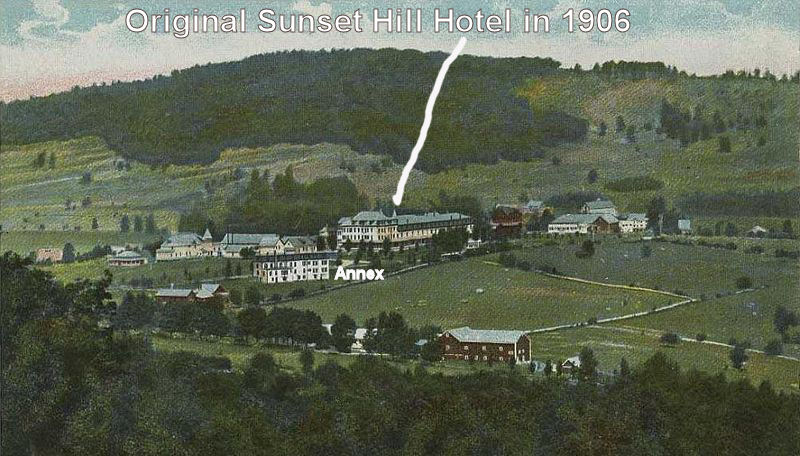
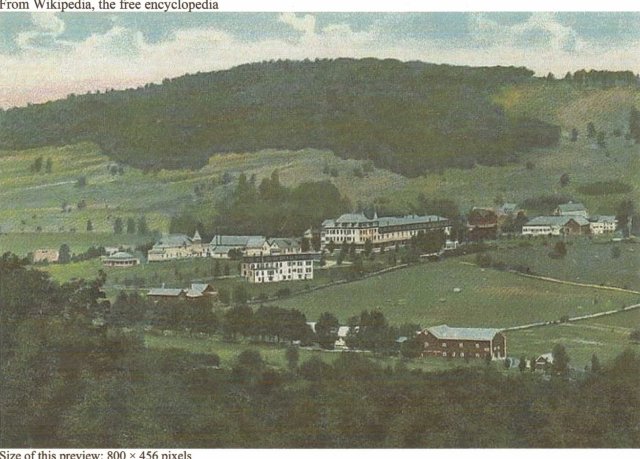
The oldest and perhaps best known
historic resorts in our little village was called Pecketts-On-Sugar-Hill
One of the reasons it was well known is that it was the home of the first ski
school in the United States
The Oscar winner Bette Davis owned nearby Butternut Farm and was supposedly
"rescued"
by the manager of the Pecketts hotel who later became her husband (that she may
have murdered)
http://www.trinity.edu/rjensen/tidbits/2007/tidbits070801.htm
Here is an old photograph of the
flower gardens of Peckets-On-Sugar-Hill
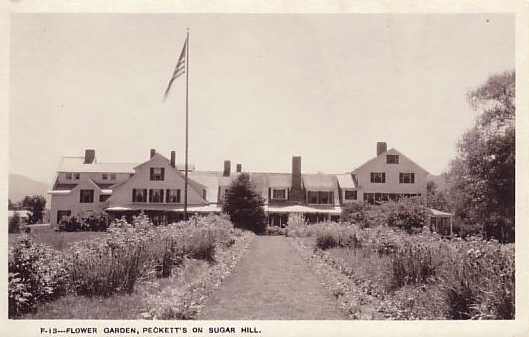
Just up the hill from our cottage
was once a luxury hotel known as the Lookoff Hotel
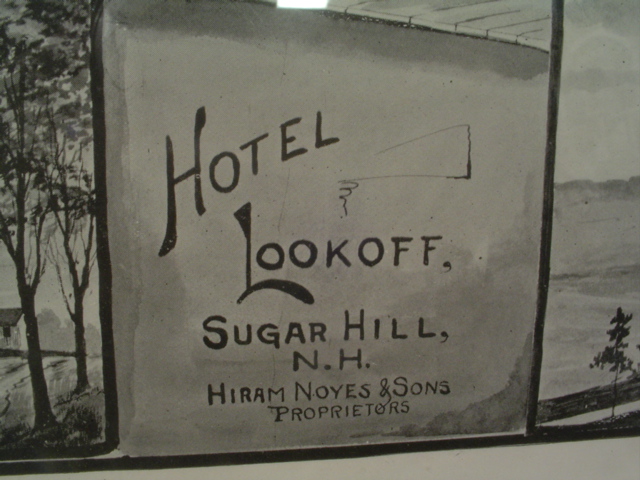
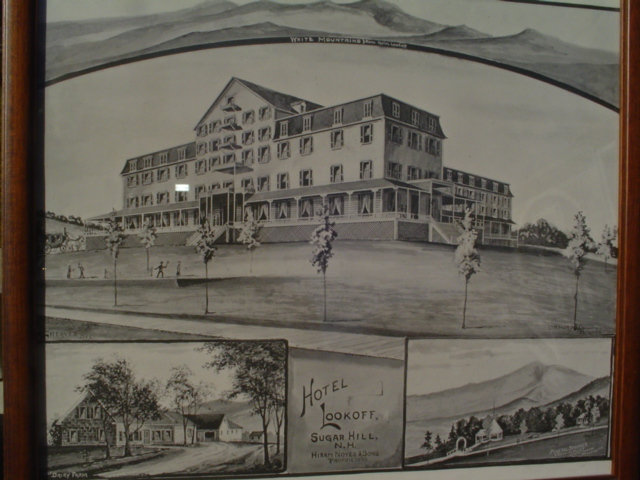
The "Spring House" springs provided
water to both the Sunset Hill Hotel and Lookoff Hotel
This building was remodeled into a private residence that still stands up the
road from our cottage
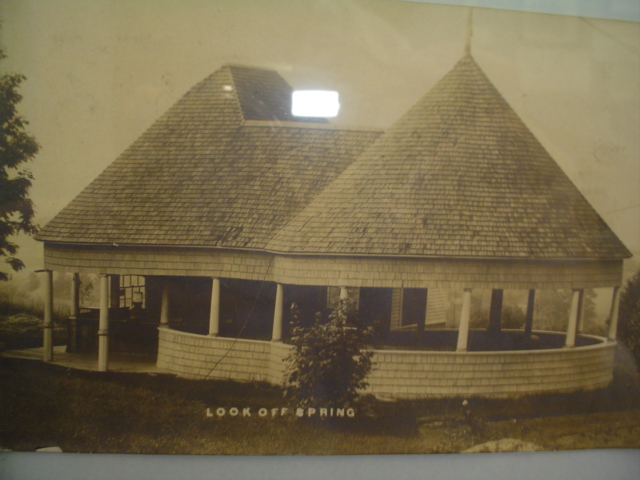
Just a few miles down the road from
Sugar Hill was the Profile House that looked like this in 1901
http://whitemountainhistory.org/Profile_House_YP3B.html
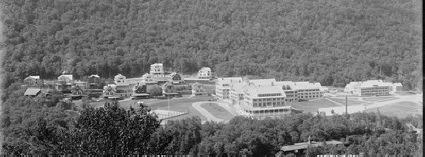
Below are some pictures of old
nearby hotels that no longer exist
For example, in the small village of Bethlehem about eight miles from our
cottage there were
at one time 14 luxurious hotels, none of which are now in operation ---
http://www.bethlehemwhitemtns.com/
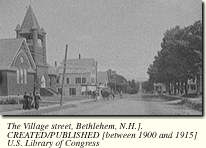
Part of the Maplewood Hotel still
exists as a golf clubhouse
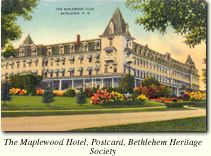
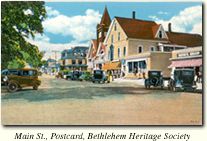
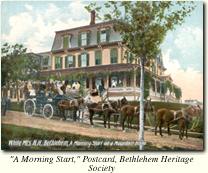

Question
Why did most of the large and historic resorts of New England and Canada play out in the latter
half of the 20th Century after thriving for 100-200 years in the windy
mountains, cold lakes, and on the Atlantic Ocean's shore?
Jensen Comment
Over 95% of these grand resorts were torn down or burned down in the latter half
of the 20th Century. This begs the question about why these thriving resorts met
their demise. In nearby Bethlehem, as noted above, there were 14 such huge hotels. Today all
14 have either disappeared or are boarded up. In Sugar Hill where we live there
were three large resorts that no longer exist.
Reasons for the beginning of the end are numerous and complicated. But one
of the main causes was the invention of effective building air conditioning.
Before AC, women and children escaped from the sweltering heat of big
cities in the east, south, and even cities in the Midwest like Chicago and St.
Louis. Husbands and fathers frequently visited on long weekends via a vast
network of passenger trains that ended in places like the Sugar Hill Station.
Other major reasons for the demise of the big summer resorts of the northeast included improvements in automobiles and roads.
Painstakingly slow Model T Fords were prone to breakdowns and flat tires on
unpaved and rutted mountain roads. Eventually fast cars with amazing tires were
whizzing over paved roads at over a mile-a-minute. New roads were opened up to
real estate in the windy mountains, cold lakes, and on the Atlantic Ocean's
shore. People not only commenced to build second homes for summer retreats and
winter skiing, they built such places as investments in booming real estate
markets following World War II.
Families in urban centers commenced to favor touring vacations instead of
fixed-in-place resorts. What became especially popular and still is popular is
for mom and dad to drop their kids off for a few weeks in summer camps in New
England and then to tour like honeymooners to other parts of New England and
Eastern Canada.
Some causes of demise of these resorts were interactive. With the greatly
improved automobiles and roads came the decline in passenger rail service upon
which New England's grand old resorts depended upon for customers. Although
train travel remained the most comfortable and efficient way to travel from
Baltimore to Sugar Hill Station, there was not enough daily demand year around
along the way to keep passenger rail service profitable. Workers commenced to
use their cars to get to and from their jobs in places like Pittsfield, MA,
Hartford, CN, and Manchester, NH. Passenger trains serving such working towns
became unprofitable, especially in the face of union featherbedding and wage
demands.
In the meantime, costs increased dramatically for these labor-intensive grand
old resorts. World War II changed the labor markets dramatically. Women could
now leave their chambermaid jobs for careers in factories and offices. Minimum
wage laws were enacted ---
http://en.wikipedia.org/wiki/Minumum_wage
And the old hotels themselves were becoming outdated relative to changed
lifestyles. Hotel guests no longer wanted to go back and forth down the hall to
"water closets" shared by other guests. Television and fast food replaced
nightly dining and dancing and conversations on porches and verandas. Lifestyles
became too fast-paced for rocking chair living.
Towering business hotels started being built in big cities under such names as
Hilton, Hyatt, Marriott, and Sheraton. In 1944 near the end of World War II, Stalin,
Churchill, and Roosevelt met with the world's leading economists and bankers in
New Hampshire's grand old Mount Washington Hotel. It was quite a journey by
train for these heads of state and leading economists and world bankers to
travel from major airports to Bretton Woods, NH. In more modern times
these busy executives would prefer to meet in luxury air conditioned hotels much
closer to the international airports ---
http://en.wikipedia.org/wiki/Bretton_Woods_Conference
The days of the above surviving resorts are probably numbered. Costs of
maintaining these historic structures according to hotel codes of today are out
of sight. Costs of labor and insurance are astronomical. Families willing to
spend $5,000 on a luxury vacation now opt for cruise ships and tours of China, Europe,
Asia, Australia, and New Zealand.
Pricing in the old days was somewhat interesting. Costs were often less that $5
per day for room and board instead of $500 per day ---
Click Here
http://books.google.com/books?id=85Y-AAAAYAAJ&pg=PA6&lpg=PA6&dq=%22Lakes+and+Summer+Resorts+in+New+Hampshire%22&source=bl&ots=vb3zaU51W0&sig=hsohYs-CbUII8g34IhF-NExoA9c&hl=en&ei=Y3eATp_TA4Pe0QGyoMkU&sa=X&oi=book_result&ct=result&resnum=2&ved=0CGYQ6AEwAQ#v=onepage&q&f=false
And today there are no dance orchestras playing each and every evening
these days.
But 1800-1960 was a wonderful era for New England and Canadian historic luxury resorts
while it lasted. And you can still experience much of what it was like in the
old days in some of the resorts pictured above.
More of Bob Jensen's Pictures and
Stories
http://www.trinity.edu/rjensen/Pictures.htm
Bob Jensen's
photo set on White Mountain Hiking Trails ---
www.trinity.edu/rjensen/Tidbits/HikingTrails/Set01/HikingTrailsSet01.htm
Long Trail Photographs (the Green Mountains of Vermont)
http://cdi.uvm.edu/collections/getCollection.xql?title=Long Trail Photographs
Oldest Long Distance Hiking Trail in the United States
February 18, 2012 message from my good friend Barry Rice in Baltimore
In the last 28 months, The Baltimore Sun
has published all three of my submissions in the Travel Section of the print
edition. The most recent was last Sunday. You can see them using this link even
if you donít have a Facebook account:
http://www.facebook.com/media/set/?set=a.601699392632.2130135.20102311&type=3&l=6289998058.
On May 14,
2006 I retired from
Trinity University after a long and
wonderful career as an accounting professor in four universities. I was
generously granted "Emeritus" status by the Trustees of Trinity University. My
wife and I now live in a cottage in the White Mountains of New Hampshire ---
http://www.trinity.edu/rjensen/NHcottage/NHcottage.htm
Bob
Jensen's Blogs ---
http://www.trinity.edu/rjensen/JensenBlogs.htm
Current and past editions of my newsletter called New
Bookmarks ---
http://www.trinity.edu/rjensen/bookurl.htm
Current and past editions of my newsletter called
Tidbits ---
http://www.trinity.edu/rjensen/TidbitsDirectory.htm
Current and past editions of my newsletter called
Fraud Updates ---
http://www.trinity.edu/rjensen/FraudUpdates.htm
Bob Jensen's past presentations and lectures
---
http://www.trinity.edu/rjensen/resume.htm#Presentations
Our
address is 190 Sunset Hill Road, Sugar Hill, New Hampshire
Our cottage was known as the Brayton Cottage in the early 1900s
Sunset Hill is a ridge overlooking with
New Hampshire's White Mountains to the East
and Vermont's
Green Mountains to the West
Bob Jensen's Threads ---
http://www.trinity.edu/rjensen/threads.htm
Bob Jensen's Home Page ---
http://www.trinity.edu/rjensen/































